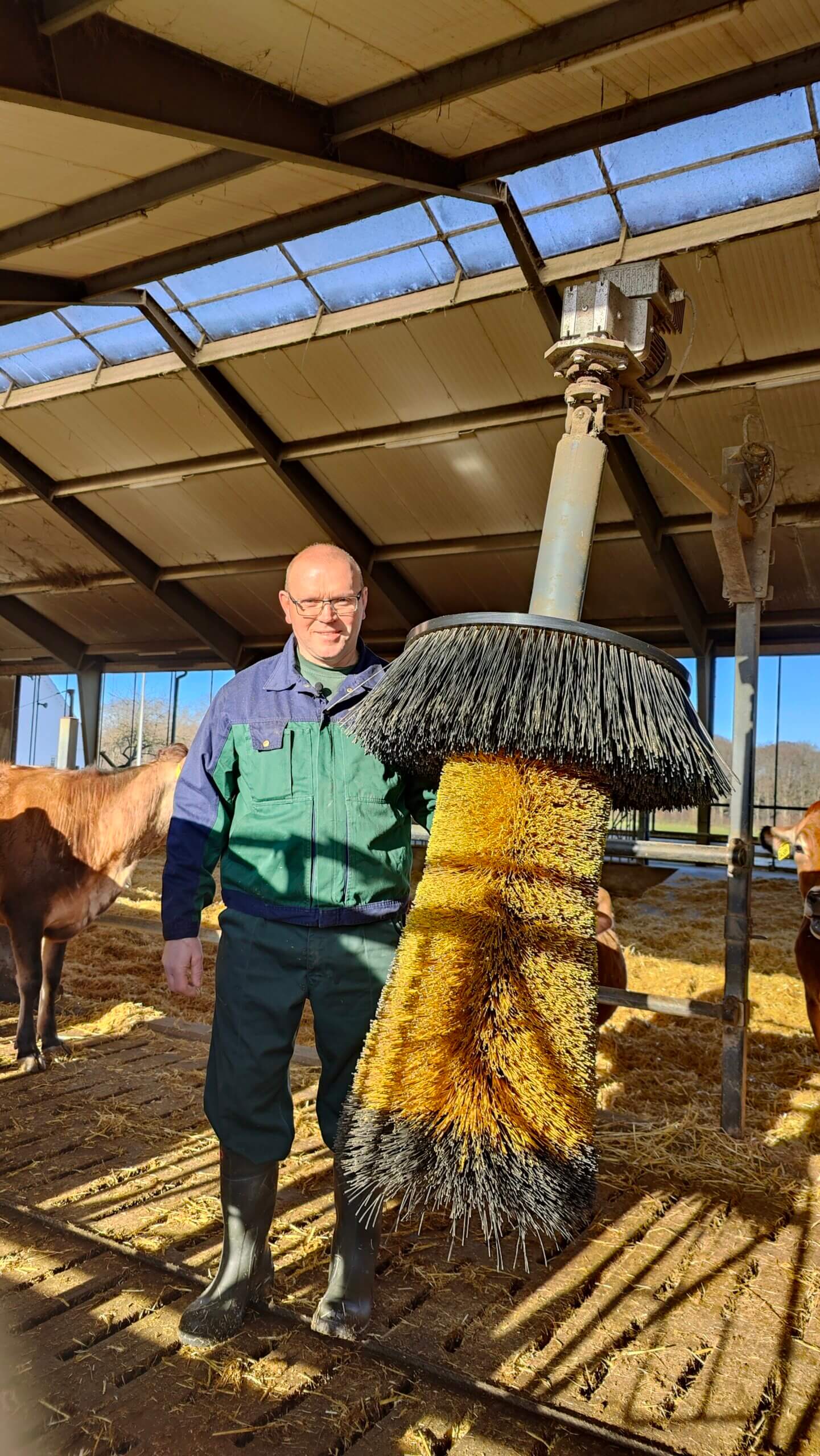What do truck and bus washrooms have in common with agricultural cow brushes?
Actually, more than one might expect! With attention turned to the new “Executive Order on Animal Welfare Minimum Requirements for the Keeping of Cattle,” a fresh approach to conventional cow brushes was initiated — with a bit of help from a clever hoof trimmer. According to the upcoming regulation, from July 1, 2022, all herds must have at least one rotating cow brush per 50 cows. This meant that many farmers were faced with the need to invest in new and additional brushes. As a result, a gap emerged in the market.
But how do you go about it when you have never had anything to do with agriculture and you want to throw yourself into the production of cow brushes? You get in touch with a skilled farmer who wants to be involved in the development of what should eventually become some of the best cow brushes on the market.

Lykkesholm, Fjelsted
On Funen near Fjelsted, not far from the motorway, is 'Lykkesholm'. Despite the short distance to the motorway network, the farm is scenic and surrounded by forest and fields. 'Lykkesholm' is run by farmer Torben Hansen and his wife, Pia, as a conventional farm with 200 Jersey cows plus related breeding. In addition to the couple themselves, four people work on the property. The team consists of the couple's son, Rasmus, two employees employed in flex jobs who have been on the property for 15 and 16 years respectively, and a part-time calf sitter. Milking is done on the property with robots, and 248 ha are also farmed this year.

Car wash facilities, hoof trimmers and conscience
Kvia, as the company is called today, hasn’t always produced cow brushes. It all began in 1981 with a focus on washing systems for trucks and buses. So yes, there were brushes — just not for cows.
In 2014, as more players within the agricultural sector began turning their attention to the new “Executive Order on Animal Welfare Minimum Requirements for the Keeping of Cattle,” where skin care for dairy cows plays a significant role, Kvia initiated the development of a new type of cow brush — encouraged by professionals with deep insight into the industry's needs.
One particular hoof trimmer played a key role in the early stages and helped establish contact with Torben Hansen on the island of Funen. After a visit to his farm, where they discussed functional and design requirements, Kvia brought the ideas home and began developing the concept. However, Torben Hansen had one clear condition for the new brush: it had to be able to rotate in both directions. He had repeatedly seen brushes on other farms pull off a cow’s tail if it was long — and as he put it himself: “And that was something I just couldn’t live with!”
After a while, Torben Hansen and his wife were invited up to the workshop where the prototype of the first cow brush had been made: "It looked fantastic, but we were a little doubtful. Whether it could also last, but he guaranteed that it could. And then I said: 'Well, then there's nothing else to do but hang it up in the stable'."
But it turned out that the pipe used was not strong enough. The tube was therefore changed to a profile tube, which is also what is used today: "And in any case, I have not had a single cow brush that has fallen down with that tube on it".

A really nice cow brush!
A cow brush's primary task is to perform skin care on the cows. And according to Torben Hansen, this is also the impression he gets that the cow brushes from Kvia do. But for a cow brush to be absolutely optimal, it must be a brush that can last, one that is easy to maintain and therefore not one that farmers have to clean and service every month – they have plenty of other things to do to!
"Well, I think that what we have today, especially the one we are standing by, is a really nice cow brush. And when both the cows and I like it, the cow brush, then we have something that matches well together!”.
The cow brush we are standing by is a 'Molly' brush, which is now three years old, which is not to be seen on it: "I think it will take three more years anyway!". And on the day the brushes need to be changed, the solution is also simple. You just have to loosen a 12 mm bolt at the bottom of the brush, on which the brushes, which are in two parts, fall down, after which two new ones can be put on, and the bolt is screwed on again. According to Torben Hansen, it's something that can be done in half an hour: "That is, from the time we start finding the tools, and then until we've rinsed it all off again. Then it's changed. But the process itself, when we stand here, we can do that in 5 minutes".




Share:
KVIA testing new brushes!